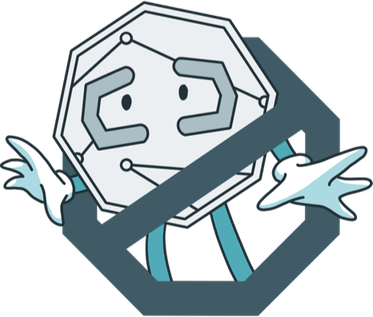Sponsored Content
Decentralized finance (DeFi) struggles with mainstream adoption partly due to inflationary token mechanics and a fragmented and intimidating user experience. Managing multiple wallets, seed phrases, gas fees and complex crosschain actions leads to user frustration and hesitation long before they benefit from DeFi's potential, while never-ending token inflation reduces token viability.
Tea-Fi aims to solve this complexity, utilizing account abstraction to unify the user experience. Tea-Fi is a “SuperApp” that removes the barriers and complexity of DeFi, powered by the TeaPOT, a protocol-owned liquidity engine that recycles real yield back to users. Behind this vision is Tea-Fi CEO Matan Doyich, a Web3 founder focused on sustainable and accessible solutions. Aiming for the simplicity of traditional fintech applications, Doyich built Tea-Fi to address the user experience gap.
In this interview, Doyich discusses the pitfalls of current DeFi, the mechanics behind Tea-Fi’s approach and his vision for a more user-friendly and sustainable decentralized future.
Cointelegraph: Collaborations appear to be a key driver of Tea-Fi’s expansion. Given the highly competitive DeFi environment, how does Tea-Fi approach partnerships, and what achievements have resulted from these collaborations to date?
Matan Doyich: In its inaugural year, Tea-Fi has rapidly gained significant traction, supported by prominent entities like Polygon Labs and Katana . The deep infrastructure alignment forged through Tea-Fi’s partnership with Katana proved highly successful, enabling Tea-Fi to acquire over one-third of Katana’s total users and establishing it as the top decentralized application (DApp) within Katana’s ecosystem.
Furthermore, our platform boasts outstanding statistics and engagement rates, including over 1.5 million connected wallets, 100,000 monthly active onchain users and a transaction volume exceeding $560 million across more than 20 million transactions.
Similarly, we have exceeded $5 million in total value locked (TVL) and cultivated a global audience of over 1 million. Our recent Tea-Fi Sprint’s first Swap Week, part of our 6 million TEA drop, generated an impressive $5 million in volume within just seven days.
CT: How does the Katana partnership reflect the strategic alignment between the two projects?
MD: Tea-Fi’s partnership with Katana is a deep infrastructure alignment rather than a surface-level collaboration. Tea-Fi now represents more than one-third of Katana’s total unique active wallets, highlighting strong mutual traction.
Katana consolidates infrastructure-level liquidity and channels rewards through its native chain-owned liquidity layer, while Tea-Fi focuses on amplifying product-layer utility and protocol-owned treasury. Together, they form a self-reinforcing ecosystem that makes DeFi more efficient, composable and user-centric.
CT: What exactly is the TeaPOT Flywheel?
MD: It’s Tea-Fi’s protocol-owned liquidity vault, a self-sustaining engine that absorbs all platform and partner revenues and compounds them back into the ecosystem. Every swap, vault deposit or card payment adds to the TeaPOT, which funds TEA token buybacks, user rewards, ecosystem giveaways and further adoption.
CT: How does this ensure sustainability?
MD: Unlike inflationary token models that rely on emissions, the TeaPOT recycles real yield. That means rewards are generated from genuine activity and value capture, not token inflation. It’s designed to be perpetual, purpose-driven and deflationary over time.
CT: With a token generation event (TGE) approaching, what roles will the token play across utility, governance and value capture?
MD: At TGE, the TEA token becomes the core engine of Tea-Fi’s self-sustaining ecosystem, driving utility, governance and value capture in one unified loop.
Utility: TEA is the asset that plugs users and partners into the TeaPOT’s value loop. It fuels activity-based rewards, yield participation, TeaCard benefits and partner integrations, serving as the economic layer connecting all features of the Tea-Fi app.
Governance: When locked, holders receive veTEA, a weighted point system, giving holders voting power, boosted rewards and higher yield multipliers. The longer the lock, the greater the influence and participation benefits, ensuring alignment between commitment and ecosystem growth.
Value capture: Protocol and partner revenues flow into the TeaPot, which compounds yield to fund TEA buybacks and user rewards. This creates a sustainable, deflationary economy driven by real onchain activity rather than token emissions.
CT: What makes the TeaApp different from other DeFi platforms?
MD: Tea-Fi makes it easy for everyone to dive into the world of DeFi. Many people find crypto confusing because they have to deal with different wallets, chains and tokens to do basic things. With Tea-Fi, everything is brought together in one simple SuperApp. Users can swap tokens, earn rewards, send tokens and grow their investments without losing control over their assets.
We also created the TeaPOT Flywheel. This helps keep giving users rewards and helps their value grow over time. It’s designed to tackle the common problems seen in the DeFi space today.
CT: How does Tea-Fi simplify the user experience?
MD: Tea-Fi simplifies the user experience through innovative tools such as Easy-Gas, which removes the necessity for native gas tokens, and SuperSwap, which seamlessly links over 40 chains with a single click, our platform offers a unified dashboard. Users can effortlessly view their assets, identify optimal yield opportunities and monitor all activity at a glance, with immediate access to ready-to-go actions.
In addition, Yield Engine automatically allocates funds across optimized onchain opportunities, hiding back-end complexity like liquidity pools or compounding strategies while the TeaCard provides a complete fiat-to-DeFi and DeFi-to-fiat experience via the TeaCard, mirroring traditional fintech but fully onchain.
CT: How do Tea-Fi’s Vaults simplify the user’s journey?
MD: Vaults are curated, protocol-owned routes that allocate into onchain opportunities on the user’s behalf. It removes the need for a strategy setup or rebalancing chores, so users can just pick a risk/return lane and start generating. Yields feed back into the TeaPOT, which in turn buys back TEA and funds user rewards, compounding the loop.
CT: What role does Easy-Gas play in the Tea-Fi ecosystem?
MD: Easy-Gas, a NOGA-powered solution and one of Tea-Fi’s protocol-aligned applications (PAAs), streamlines DeFi. It eliminates the need for native tokens to cover gas fees, supporting over 40 blockchains. Users can pay with stablecoins or other supported tokens, providing a gasless, user-friendly, Web2-like experience for DeFi interactions.
CT: What are PAAs?
MD: PAAs like NOGA are external protocols that integrate Tea-Fi infrastructure like gas abstraction, yield routing or loyalty, and feed revenue back into the TeaPOT. It’s a win-win: PAAs gain reach and support, while Tea-Fi gains compounding ecosystem growth.
CT: How does Tea-Fi handle security and custody?
MD: Tea-Fi is self-custodial by default, audited by firms like Halborn and Cyberscope, and offers multiparty computation (MPC) options through Utila. Users always hold their keys while maintaining control over their assets.
CT: What does a “fragmentless, account-abstracted” DeFi experience actually mean, and why does it matter for everyday users?
MD: A “fragmentless, account-abstracted” DeFi experience means users no longer need to navigate multiple chains, wallets or protocols. This new approach creates a unified, seamless environment where all actions happen behind the scenes, regardless of the underlying blockchain or protocol.
Account abstraction is key, allowing smart contracts to manage accounts for users. This enables gasless transactions, social logins, automated payments and recovery options, replacing technical complexity with a smoother, app-like experience.
For everyday users, this removes DeFi's intimidation factor. Instead of worrying about gas fees, network switching or lost seed phrases, users experience DeFi as effortlessly as a fintech app. This transforms DeFi from a niche, expert-only space into an accessible, consumer-friendly platform.
CT: As a 24-year-old founder, how have your experiences in tokenomics, fundraising and partnerships shaped Tea-Fi’s first year?
MD: As a 24-year-old founder, I’ve had the unique advantage of evolving alongside Web3, shaped by it but not limited by the status quo or stuck in the old paradigm. I’ve watched the early experiments in DeFi, learned from their volatility and seen how innovation can outpace sustainability.
When we built Tea-Fi, the goal was to correct those early inefficiencies: short-term token models, fragmented ecosystems and user experiences that only experts could navigate.
My background in tokenomics and partnerships shaped how we approached Tea-Fi’s design of the TeaPOT Flywheel — channeling every swap, vault deposit and partner integration into protocol-owned liquidity, recycling value rather than depleting it and creating genuine compounding growth within an ever-growing ecosystem.
Disclaimer. Cointelegraph does not endorse any content or product on this page. While we aim at providing you with all important information that we could obtain in this sponsored article, readers should do their own research before taking any actions related to the company and carry full responsibility for their decisions, nor can this article be considered as investment advice.


